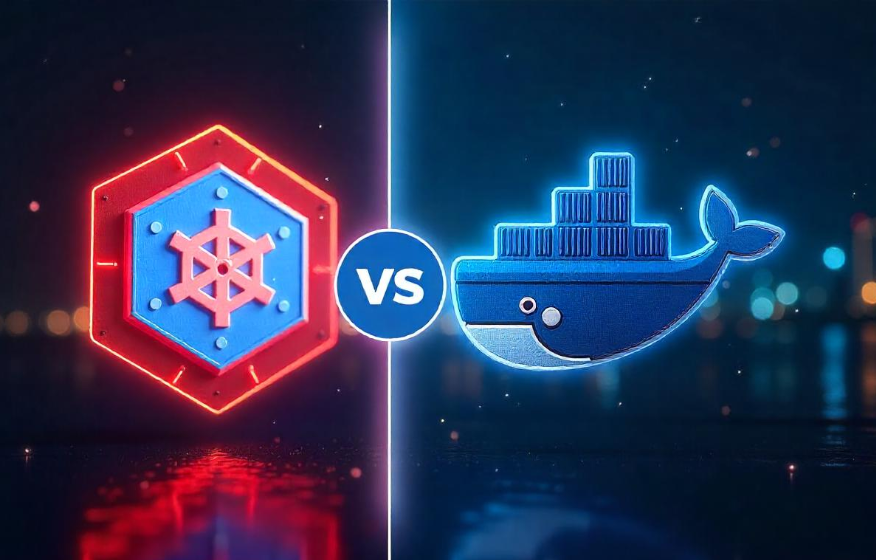
In the world of modern software development, containerization has revolutionized how applications are built, deployed, and managed. To effectively manage containers at scale, developers and DevOps teams turn to container orchestration tools. Two of the most popular options are Kubernetes and Docker Swarm. This article provides an in-depth comparison of Kubernetes vs Docker Swarm, analyzing their architectures, performance, scalability, security, and more to help you make an informed decision.
Understanding Container Orchestration
Container orchestration involves managing the lifecycle of containers, especially in large, dynamic environments. This includes tasks like deployment, scaling, load balancing, and fault tolerance. Without orchestration tools, managing hundreds or thousands of containers would be unmanageable.
Some of the best-known container orchestration tools include:
Kubernetes
Docker Swarm
Apache Mesos
Nomad
What is Docker Swarm?

Docker Swarm is Docker’s native clustering and orchestration tool. It simplifies the deployment and management of containerized applications.
Key Features of Docker Swarm
Native integration with Docker
Simplicity and ease of setup
Declarative service model
Built-in load balancing
Lightweight and fast
Docker Swarm is often praised for being beginner-friendly and ideal for small to medium deployments.
What is Kubernetes?

Kubernetes, originally developed by Google, is now maintained by the Cloud Native Computing Foundation (CNCF). It’s a powerful, open-source platform designed to automate container deployment, scaling, and operations.
Key Features of Kubernetes
Highly scalable and extensible
Advanced networking and load balancing
Automated rollouts and rollbacks
Self-healing capabilities
Wide community and ecosystem support
Kubernetes is considered the industry standard for large-scale container orchestration.
Kubernetes vs Docker Swarm: Key Differences
Architecture
Kubernetes uses a master-worker architecture with a control plane, etcd for configuration, and kubelets on nodes.
Docker Swarm uses a manager-worker model but is more tightly integrated with Docker Engine.
Setup and Installation
Docker Swarm is easier and faster to set up, making it suitable for quick deployments.
Kubernetes has a steeper learning curve but offers more robust capabilities.
Scalability
Kubernetes vs Docker Swarm scalability: Kubernetes handles complex scaling more efficiently and supports auto-scaling natively.
Docker Swarm can scale well but lacks some of the advanced options Kubernetes offers.
Performance
Kubernetes vs Docker Swarm performance: Docker Swarm offers faster deployment due to its lightweight nature.
Kubernetes might introduce some overhead but performs better in large, complex environments.
Networking
Kubernetes vs Docker Swarm networking: Kubernetes provides a powerful CNI-based networking model.
Docker Swarm uses a simpler built-in overlay network.
Security
Kubernetes vs Docker Swarm security: Kubernetes includes role-based access control (RBAC), secrets management, and network policies.
Docker Swarm includes basic TLS encryption and authentication but lacks advanced security controls.
Community and Ecosystem
Kubernetes has a vast and active community, frequent updates, and strong vendor support.
Docker Swarm’s community is smaller, and its future is uncertain given Docker’s strategic shift toward Kubernetes.
Kubernetes vs Docker Swarm: Use Cases
Kubernetes Use Cases
Enterprise-level microservices
Large-scale web applications
CI/CD pipelines
Hybrid cloud deployments
Docker Swarm Use Cases
Quick development/test environments
Small production setups
Simple microservices
Kubernetes vs Docker Swarm use cases depend heavily on your organization’s scale, complexity, and expertise.
Kubernetes Alternatives
If neither tool suits your needs, consider these Kubernetes alternatives:
Apache Mesos: Highly scalable, suitable for big data workloads.
HashiCorp Nomad: Lightweight and easy to integrate.
OpenShift: Enterprise Kubernetes distribution by Red Hat.
Rancher: Simplifies Kubernetes cluster management.
Pros and Cons: Docker Swarm vs Kubernetes
Docker Swarm Pros
Simple to set up and use
Faster deployments
Integrated with Docker
Docker Swarm Cons
Limited scalability
Fewer features and integrations
Smaller community
Kubernetes Pros
Feature-rich and flexible
Strong community support
Ideal for large, complex systems
Kubernetes Cons
Complex setup
Steeper learning curve
Resource-intensive
Kubernetes vs Docker Swarm for Beginners
For those new to container orchestration:
Docker Swarm for beginners: Easier to get started, especially if you’re already using Docker.
Kubernetes for beginners: More challenging, but better in the long term due to broader adoption and support.
Conclusion
Choosing between Kubernetes vs Docker Swarm depends on your project’s scale, complexity, and team expertise. Docker Swarm is great for simpler use cases and rapid deployments, while Kubernetes excels in managing complex, large-scale applications with advanced features. Both tools serve valuable purposes in the DevOps ecosystem, and understanding their strengths and weaknesses can guide better architectural decisions.